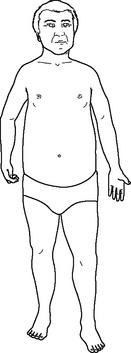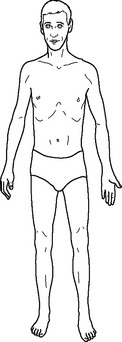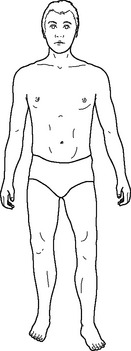Chapter 1 CLASSIFICATION OF BODY SHAPE ACCORDING TO YIN AND YANG CLASSIFICATION OF BODY SHAPE ACCORDING TO THE FIVE ELEMENTS CLASSIFICATION OF BODY SHAPE ACCORDING TO PRENATAL AND POSTNATAL INFLUENCES Body shape with strong prenatal constitution Body shape with weak prenatal constitution Body shape with strong Postnatal Qi CLASSIFICATION ACCORDING TO BODY BUILD CLASSIFICATION OF BODY SHAPE ACCORDING TO PAIN AND DRUG TOLERANCE The body shape of a person is determined by the prenatal constitution and subsequent postnatal nourishment: for this reason, the body shape of a person can give us an indication both of the constitutional tendency to a certain pathology and of an actual pathology resulting from postnatal influences. Observation of the body (including size, height, tone of skin and muscles, length of bones, etc.), as well as of demeanour and personality, is important to assess the constitution of a patient. Chapter 21 of the “Simple Questions” says, “In diagnosing diseases one should observe whether the patient is extrovert or timid and observe the state of the bones, muscles and skin in order to understand the condition so that we can diagnose and treat.”1 There are five different ways of classifying the body shape in Chinese medicine, which are described below: The possible body shapes according to Yin and Yang are: Chapter 31 of Volume 4 of the “Classic of Categories” (Lei Jing, 1624) summarizes the characteristics of people with a constitutional excess of Yin, people with a constitutional excess of Yang and people with a balance of Yin and Yang: People gifted with pure Yin are known as the Greater-Yin type; those with a mixture of Yin and Yang but more Yin than Yang are known as the Lesser-Yin type; those with pure Yang are known as the Greater-Yang type; those with a mixture of Yin and Yang but more Yang than Yin are known as the Lesser-Yang type. Together with the type of people with equal Yang and Yin, these constitute the five different types of people. Therefore, for people with abundant-Yang constitution, it is advisable to use cooling methods of treatment. For people with abundant-Yin constitution, it is advisable to use warming methods of treatment.2 The body shape, demeanour and personality of a person with abundant Yang are as follows: strong body build, tendency to a red face, preference for cold, intolerance of heat, preference for light clothes, lively character, active and talkative nature, loud voice, tendency to laugh, tendency to being a high achiever, decisiveness, assertiveness, walking with the chest and stomach projecting forward (Fig. 1.1). The “Spiritual Axis” in Chapter 72 says: A Greater-Yang type of person looks arrogant with the chest and stomach projected forward as if the body was bending backwards. This is the picture of a Greater-Yang type of person. A Lesser-Yang type of person holds the head high while standing, and shakes the body while walking. The two hands are often held behind the body with the arms and elbows exposed on the side of the body. This is the picture of a Lesser-Yang type of person.3 A Greater-Yang type of person has excess of Yang and deficiency of Yin and it is necessary to examine them with great care and treat them so that the Yin is not reduced to the point of collapse. The Yang must be reduced but not excessively to the point of collapse, lest the patient develops madness.4 Chapter 67 of the same book says: A person with abundant Yang is emotional and as warm as fire; he talks fast and is swollen with arrogance. It is because the Heart- and Lung-Qi of such a person are abundant; Yang-Qi is therefore plentiful and flows freely and vigorously. For this reason, it is easy to stimulate his spirit, and the Qi arrives quickly when acupuncture is given.5 People with abundant Yang hold their head high while standing because it is in the nature of Yang to rise. They shake their body while walking because it is in the nature of Yang to move. They often hold their hands behind the body with the arms and elbows by the sides of the body as it is in the nature of Yang to be exposed. This is the picture of the personality of the Lesser-Yang type of people.6 The six external pathogenic factors attack people in the same way but diseases caused by them will have different manifestations in different people. Why? The reason is that a person’s body can be either strong or weak, Qi can be full or deficient, and the internal organs can be of cold or hot. After the external pathogenic factors invade the body, they will transform according to the condition of the internal organs. Therefore, the syndromes vary. They can transform into deficient or excessive conditions, and into cold or hot conditions.7 The typical characteristics of a person of the abundant-Yin type are: a tendency to obesity, relatively dark complexion, loose muscles with thick skin, quiet, reticent and introverted nature, soft voice, a preference for heat and a desire to wrap up warm (Fig. 1.2). Chapter 72 of the “Spiritual Axis” says: Persons of the Greater-Yin type have a sombre countenance and pretend to be humble. They have the body build of a grown-up, but make themselves smaller by bending their back and knees slightly. This is the picture of a Greater-Yin type of person … They are restless while standing, and walk as if to hide themselves. This is the picture of a Lesser-Yin type of person.8 Persons of the Greater-Yin type are constitutionally excessive in Yin and deficient in Yang. Their Yin and Blood are thick and turbid. Their Defensive Qi does not flow freely. Yin and Yang are not in a harmonious state, which leads to loose sinews and thick skin. When needling patients with an abundant-Yin constitution, only through reducing the Yin quickly and immediately can an improvement be expected.9 The Yellow Emperor asks: “How is it that sometimes the body will react only after several acupuncture treatments?” Qi Bo answers, “Such a person is excessive in Yin and deficient in Yang. The movement of Qi is restrained and therefore it is difficult for Qi to arrive when the patient is needled. This is the reason why the body will react to the acupuncture only after several treatments.10 The typical characteristics of a person with the deficient-Yang type of body shape are as follows: overweight/swollen body, pale or pale-bluish complexion, listlessness, low spirits, slow movement, weak, loose muscles, a preference for warmth, aversion to cold, cold limbs and a desire to wrap up (Fig. 1.3). The typical characteristics of a person with a deficient-Yin type of body shape are as follows: thin body build, sometimes red cheeks and lips, an excited look, a restless expression in eyes, a propensity to be excited, a feeling of heat and quick movements. People of Yin-deficient body shape are often deficient in Yin and excessive in Yang. The body is thin and tall with a long-shaped head, thin long neck, narrow shoulders and a narrow, long, flat chest. These people often bend forward when they walk or stand (Fig. 1.4). The body shape with harmony of Yin and Yang is of medium build, not too tall or short, neither too stout nor thin. The movements are balanced and the personality is stable. People with such a constitution are better able to adapt themselves to changes caused by the stresses of life (Fig. 1.5). The body shapes according to the Five Elements are: People of the Wood type have a subtle shade of green in their complexion, a relatively small head and long-shaped face, broad shoulders, straight back, tall, sinewy body and elegant hands and feet. In terms of personality, they have developed intelligence but their physical strength is poor. Hard workers, they think things over and tend to worry (Fig. 1.6, see also Plates 1.1 and 1.2 on p. P1). Chapter 64 of the “Spiritual Axis” says: The Wood type of people correspond to Shang Jiao of the note Jiao, which is one of the five notes and is related to the element of Wood. Their complexion colour is similar to that of the Green Emperor, who is one of the five heavenly emperors, and represents the East. Their complexion has a subtle green colour, they have a small head, long-shaped face, broad back and shoulders, straight body trunk and small hands and feet. They are intelligent, and keep their mind working hard. They are not strong physically. The are often worried. They like Spring and Summer and dislike Autumn and Winter.12 People of the Wood type can tolerate Spring and Summer but not Autumn or Winter. In Autumn or Winter, they suffer from diseases caused by invasion of pathogenic factors.13 People of the Wood type respond to the colour green, which is at its best when, like green wood, there is moisture in it. People of the Wood type have a straight body just like the trunk of a tree. They have the so-called five kinds of Smallness, i.e. a small head, small hands and small feet, just like the twigs of a tree. They have the so-called five kinds of Thinness and Length, implying a long, thin body trunk and limbs, like the branches of a tree. Just as wood has various uses and can be cut in different ways as wanted, people of the Wood type are versatile, and are apt to intellectual work. Just as wood is seldom quiet [i.e. always swaying in wind and breeze], people of the Wood type tend to worry, and are often exhausted by what they do. If wood is not straight but is short and soft, it is not good timber for use.14 Box 1.1 summarizes the characteristics of the Wood type. People of the Fire type have a red, florid complexion, wide teeth, a pointed, small head, possibly with a pointed chin, hair that is either curly or scanty, well-developed muscles of the shoulders, back, hips and head and relatively small hands and feet. In terms of personality, they are keen thinkers. The Fire type is quick, energetic and active. They are short-tempered. They walk firmly and shake their body while walking. They tend to think too much and often worry. They have a good spirit of observation and they analyse things deeply (Fig. 1.7, see also Plate 1.3 on p. P1).
 OBSERVATION OF THE BODY SHAPE, PHYSIQUE AND DEMEANOUR
OBSERVATION OF THE BODY SHAPE, PHYSIQUE AND DEMEANOUR
INTRODUCTION
CLASSIFICATION OF BODY SHAPE ACCORDING TO YIN AND YANG
Body shape abundant in Yang
Observation
Quotations from the classics
Body shape abundant in Yin
Observation
Quotations from the classics
Body shape deficient in Yang
Observation
Body shape deficient in Yin
Observation
Body shape with Yin and Yang in balance
Observation
CLASSIFICATION OF BODY SHAPE ACCORDING TO THE FIVE ELEMENTS
Wood type
Observation
Quotations from the classics
Fire type
Observation
![]()
Stay updated, free articles. Join our Telegram channel

Full access? Get Clinical Tree


OBSERVATION OF THE BODY SHAPE, PHYSIQUE AND DEMEANOUR







